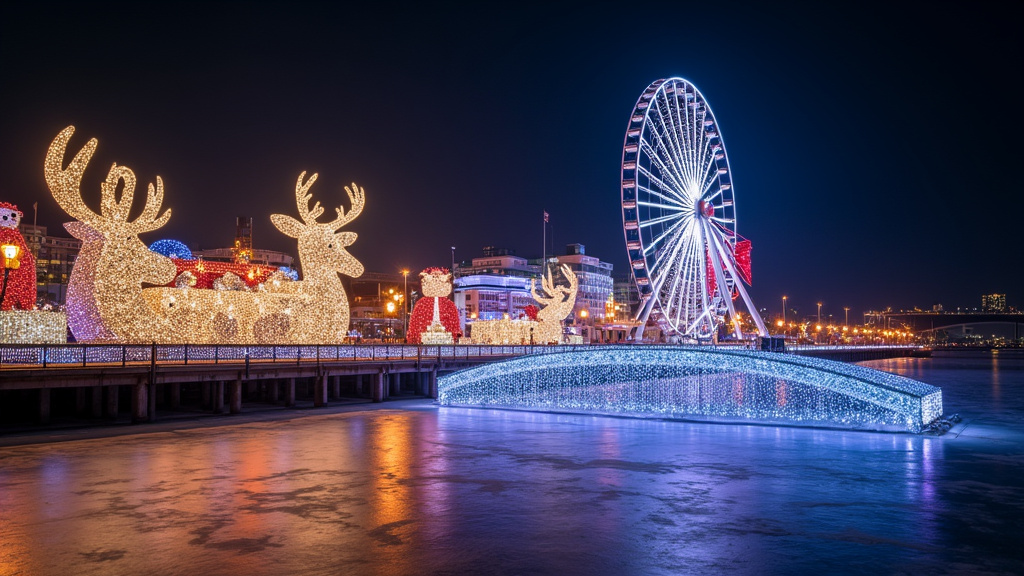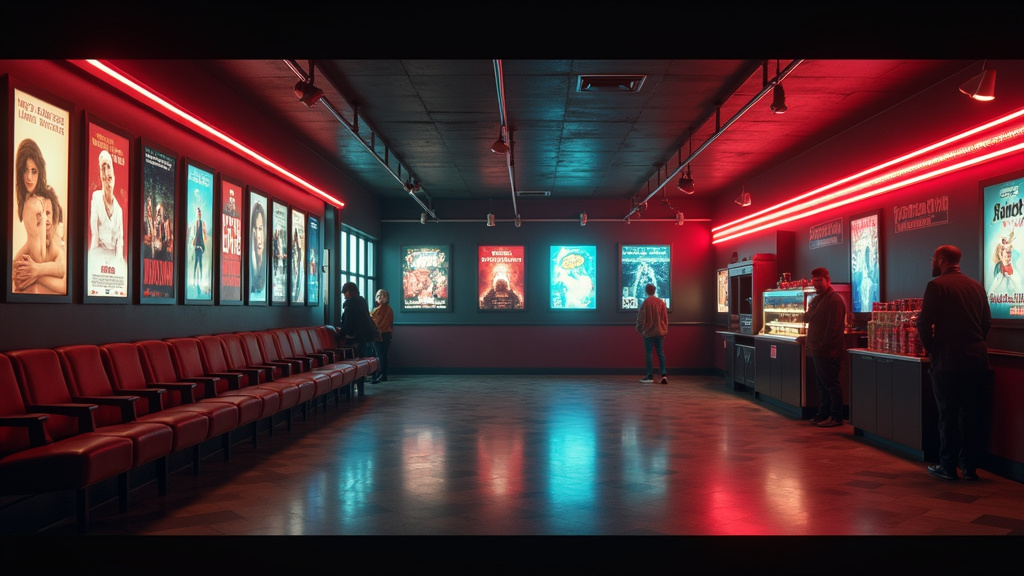Beneath the bustling streets of Chicago lies a hidden world that many residents walk past—or over—every day without a second thought. The Chicago Pedway, a network of tunnels, walkways, and skybridges, is an architectural gem and a logistical marvel that has quietly served the city for decades. Spanning approximately five miles, this labyrinth connects over 50 buildings, including major transit hubs, offices, hotels, and retail spaces. But despite its practicality and potential, the Pedway is one of Chicago’s least-known treasures, steeped in a fascinating history and a future full of untapped possibilities.
A Walk Through History
The origins of the Pedway date back to the early 1950s, when Chicago planners sought innovative ways to address the city’s growing congestion and harsh winter climate. The first section, completed in 1951, connected the Blue Line station at Washington Street to several nearby office buildings. At the time, it was a revolutionary solution, providing a weatherproof pathway for commuters and pedestrians.
Over the decades, the Pedway expanded incrementally, with additional connections built in the 1970s and 1980s as new buildings were constructed. Unlike a grand master plan, the Pedway grew piece by piece, shaped by the needs of the developers and property owners who contributed to its construction. Today, it reflects this patchwork approach: a mix of sleek, modern corridors, aging tunnels with fluorescent lighting, and quirky spaces adorned with unexpected art installations.
Yet, for all its practicality, the Pedway never reached its full potential. Planners envisioned a seamless underground network that would rival similar systems in cities like Montreal and Minneapolis. Instead, inconsistent signage, confusing layouts, and a lack of cohesive branding have left many Chicagoans unaware of the Pedway’s full extent—or even its existence.
The Pedway in Modern Chicago
Despite its underwhelming public profile, the Pedway is a lifeline for those who know how to use it. Commuters in the Loop rely on it to move between trains, offices, and lunch spots without braving the wind tunnels created by Chicago’s skyscrapers. Tourists occasionally stumble upon its entrances, marveling at its odd blend of urban grit and hidden charm.
One of the Pedway’s key strengths is its ability to adapt. Over the years, it has absorbed new developments, such as the Block 37 shopping mall and access points to Millennium Park. It also connects some of the city’s most iconic landmarks, from the Chicago Cultural Center to City Hall. But these connections often feel disjointed, a missed opportunity to integrate the Pedway more deeply into the city’s fabric.
Regular users of the Pedway often note its quirks: the vending machines that appear in the middle of a tunnel, the occasional musician serenading passersby, and the wildly varying temperatures from one section to the next. These idiosyncrasies make the Pedway an adventure for the curious but a source of frustration for those seeking a streamlined experience.
Challenges and Untapped Potential
The Pedway’s biggest challenge is its lack of visibility. Many Chicagoans are unaware it exists, and even those who use it frequently struggle with poor signage and a confusing layout. Unlike Montreal’s RESO or Toronto’s PATH, the Pedway lacks a unified identity. There is no official map or app to guide newcomers, and its entrances are often poorly marked.
Moreover, the Pedway’s piecemeal construction has resulted in inconsistent maintenance and design. While some sections feel like modern transit hubs, others are dimly lit and barely maintained. These disparities not only deter potential users but also raise questions about safety and accessibility.
However, the Pedway’s limitations are also its greatest opportunities. Urban planners and city officials have a rare chance to reimagine this hidden network as a vital part of Chicago’s infrastructure. With strategic investment and creative thinking, the Pedway could transform from an overlooked convenience into a celebrated feature of the city.
Reimagining the Pedway
What would it take to breathe new life into the Pedway? Experts suggest several key steps:
- Improved Signage and Wayfinding
A comprehensive signage system, complete with maps and digital navigation tools, could make the Pedway more accessible to newcomers and tourists. Bright, consistent branding would help establish its identity as a cohesive network rather than a series of disconnected tunnels. - Enhanced Safety and Accessibility
Upgrades to lighting, ventilation, and security systems would address safety concerns and make the Pedway more inviting. Accessibility improvements, such as ramps and elevators, would ensure that all Chicagoans can navigate the network with ease. - Retail and Cultural Integration
Pop-up shops, art installations, and food vendors could transform the Pedway into a vibrant underground marketplace. By partnering with local businesses and artists, the city could create a unique destination that draws both residents and visitors. - Connection to Sustainability Goals
The Pedway could play a role in Chicago’s broader sustainability efforts by reducing street-level congestion and encouraging pedestrian travel. Enhanced connectivity to public transit hubs would further support the city’s green initiatives. - Community Engagement
Public input is crucial for the Pedway’s revitalization. By involving residents, businesses, and advocacy groups in the planning process, the city can ensure that improvements reflect the needs and desires of its diverse population.
A Vision for the Future
Imagine a Chicago where the Pedway is as iconic as the L or the Bean—a dynamic space that combines practicality with urban flair. Picture commuters zipping through brightly lit tunnels adorned with murals, grabbing coffee from a local roaster’s pop-up kiosk, or catching a live performance in a central gathering area. Tourists would flock to the Pedway not as a curiosity but as a destination in its own right, a testament to Chicago’s innovation and resilience.
The potential is there, waiting beneath our feet. As the city grapples with challenges ranging from climate change to economic inequality, the Pedway offers a unique opportunity to invest in infrastructure that benefits everyone. It’s not just about convenience; it’s about imagining a Chicago that fully embraces its hidden gems and makes them shine.
Rediscovering What Lies Below
As you walk through the Loop on your next lunch break, take a moment to look down. Beneath the sidewalk, there’s a whole other Chicago—one that tells a story of ambition, adaptation, and unrealized dreams. The Pedway is more than just a network of tunnels; it’s a reflection of the city itself: complex, ambitious, and full of surprises.
With the right vision and commitment, this forgotten underground could become one of Chicago’s proudest achievements. Until then, it remains a mystery waiting to be unraveled—a journey for the adventurous and a reminder that sometimes, the most fascinating parts of a city are the ones we overlook.












